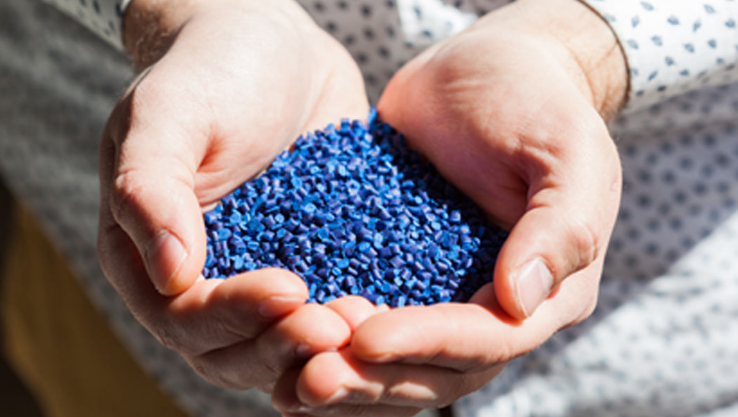Common polymers used for extrusion include polyethylene (PE), polypropylene (PP), PVC, ABS, and PET, depending on the desired properties and applications.
Overview of Polymers in Extrusion
Common Characteristics of Extrusion-Grade Polymers
Extrusion-grade polymers typically share several key characteristics that make them suitable for the extrusion process. These include:

High Melt Strength: Essential for maintaining the shape and integrity of the polymer as it exits the extruder. Polymers like Polyethylene (PE) and Polypropylene (PP) exhibit high melt strength, allowing for consistent extrusion without deformation.
Thermal Stability: A crucial characteristic that ensures polymers can withstand the high temperatures during extrusion without degrading. For example, Polycarbonate (PC) remains stable up to temperatures of around 260°C.
Uniform Rheological Properties: Polymers must exhibit consistent flow properties under the influence of heat and pressure. Variations can lead to defects in the extruded product.
Low Moisture Absorption: This reduces the likelihood of hydrolytic degradation during processing. Polymers like PET are treated for moisture before extrusion to maintain quality.
The Role of Polymer Properties in Extrusion
The properties of polymers play a pivotal role in determining their suitability and performance in the extrusion process:
Viscosity and Flow Rate: Directly affect the extrusion speed and quality. Polymers with a balanced viscosity, like certain grades of PE, allow for efficient extrusion at varying speeds.
Thermal Conductivity: Impacts the cooling rate post-extrusion. Polymers with higher thermal conductivity, such as ABS, cool down faster, increasing the production speed.
Mechanical Properties: Determine the end-use applications of the extruded products. For example, high-density PE is chosen for its strength and rigidity in piping applications.
For more comprehensive information on polymers used in extrusion, visit the Polymer Extrusion Wikipedia page.
Thermoplastic Polymers for Extrusion
Polyethylene (PE): Types and Applications
| Type | Characteristics | Applications |
|---|---|---|
| Low-Density PE (LDPE) | Flexible, high resilience, low melting point (110°C – 115°C) | Packaging films, bags, containers |
| High-Density PE (HDPE) | High strength, stiffer, melting point around 130°C | Piping, plastic lumber, corrosion-resistant parts |
Polypropylene (PP): Properties and Uses
| Property | Description | Uses |
|---|---|---|
| Chemical Resistance | Resistant to acids and bases | Chemical containers, automotive parts |
| High Melting Point | Melts around 160°C – 170°C | Suitable for hot-fill packaging, microwave containers |
| Fatigue Resistance | Excellent endurance for repeated flexing | Living hinges in packaging |
Polystyrene (PS): Features and Extrusion Processes
| Feature | Impact on Extrusion | Typical Products |
|---|---|---|
| Ease of Processing | Low melting point (240°C – 260°C), easy to shape | Disposable cutlery, CD cases, plastic models |
| Brittleness | Requires careful handling post-extrusion | Packaging materials, insulation panels |
| Clarity | Produces clear products | Food packaging, laboratory ware |
For more detailed information about thermoplastic polymers, visit the Thermoplastic Wikipedia page.
Engineering Plastics in Extrusion
Nylon: Advantages and Industrial Uses
Nylon excels in engineering applications due to its impressive strength and thermal stability. It typically melts at temperatures between 220°C and 260°C, making it well-suited for high-performance uses. The material’s low friction coefficient and resistance to wear significantly benefit components like gears and bearings. Moreover, its durability against chemicals and abrasion makes it a top choice for automotive and industrial machine parts. Additionally, nylon’s adaptability in fiber production leads to widespread use in textiles and carpets, showcasing its versatility.
Acrylonitrile Butadiene Styrene (ABS): Characteristics and Applications
ABS, recognized for its high impact strength and superb moldability, thrives in the extrusion process. It melts effectively in the range of 200°C to 250°C, ensuring efficient manufacturing. The material maintains its rigidity and toughness even at low temperatures, making it ideal for consumer products such as LEGO bricks, automotive components, and electronic casings. The ease of coloring ABS and achieving an aesthetic finish post-extrusion has also cemented its popularity in the 3D printing sector.
Polycarbonate (PC): Properties and Extrusion Techniques
Polycarbonate stands out for its exceptional clarity and unparalleled impact resistance. Requiring careful temperature management, it melts at around 260°C to 270°C. This property makes it a prime choice for transparent, strong applications like eyewear and bulletproof glass. PC’s resilience to UV radiation and temperature extremes also suits it for outdoor uses. In extrusion, combining PC with other materials often enhances its flexibility or reduces costs, further extending its application scope.
To delve deeper into these materials, consider exploring the Engineering Plastics Wikipedia page.
Specialty Polymers for Advanced Extrusion
High-Performance Polymers: PEEK and Ultem
PEEK (Polyether Ether Ketone), renowned for its high thermal stability, melts at around 343°C, making it suitable for applications requiring extreme heat resistance. Its excellent mechanical properties and chemical resistance make it ideal for aerospace, automotive, and medical implants. PEEK’s cost is higher compared to standard polymers, reflecting its advanced capabilities and longevity.

Ultem (Polyetherimide), with a melting point near 217°C, offers remarkable strength and flame resistance. It finds extensive use in electrical and electronic insulation applications. Ultem’s ability to retain its properties at high temperatures makes it a preferred choice in the automotive and aerospace sectors, despite its higher cost compared to more common polymers.
Bio-Based Polymers: PLA and Their Expanding Role
PLA (Polylactic Acid), a bio-based polymer derived from renewable resources like corn starch, melts at about 160°C to 180°C. It is gaining popularity in packaging, disposable tableware, and 3D printing due to its biodegradability. PLA’s lower melting point reduces energy consumption during extrusion, offering an eco-friendly alternative to traditional plastics. However, its lower strength and heat resistance compared to petroleum-based polymers limit its application in high-performance areas.
For further insights into these advanced materials, explore the Specialty Polymers Wikipedia page.




